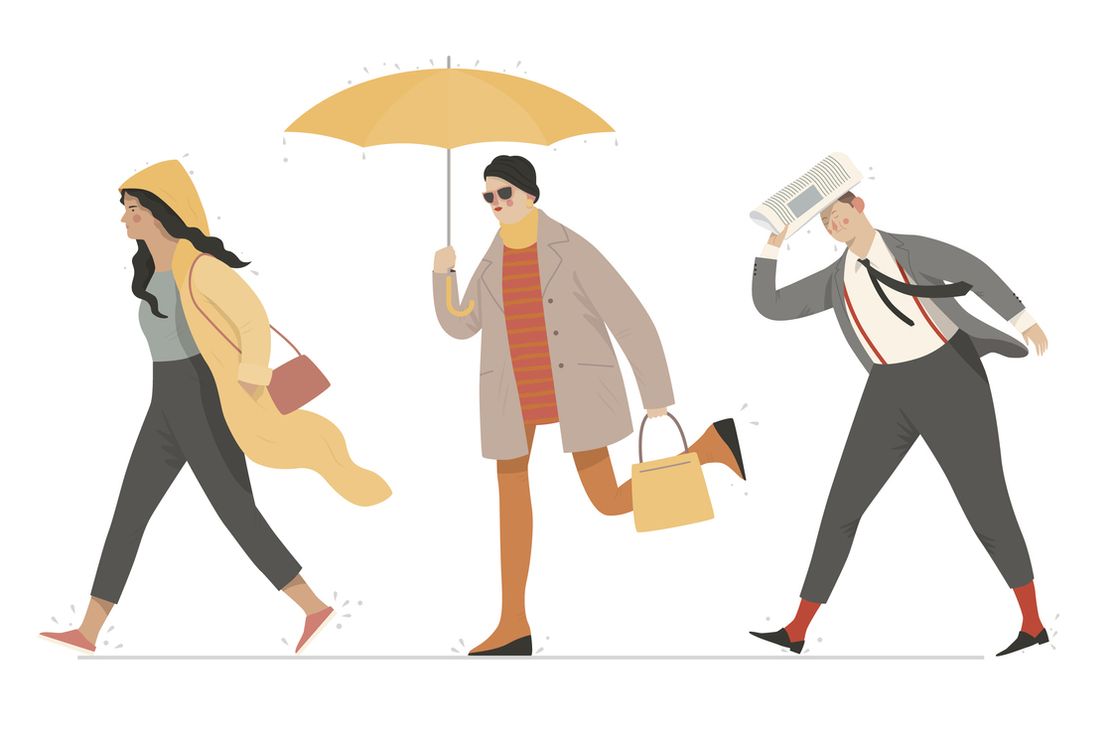What Should I Wear in Russia?
One of the biggest questions before going to Russia is what to pack. But don’t worry if you don’t have any cold-weather clothes yet—you can bring a basic set of clothes for spring, summer, and autumn and buy winter essentials once you’ve arrived.
Clothes for Winter

Depending on the region, the winter temperatures in Russia range from 10°C (in Krasnodar) to ‑40°C (in Yakutia). In Moscow and St Petersburg, winter temperatures range from ‑10°C to ‑20°C.
In Moscow, freezing temperatures usually start in early October and end in the middle of May. Snow stays on the ground from late November to early April.
‘There is no bad weather, only bad clothes,’ goes a common Russian saying. In most cases, winter is the Russian season you have to prepare for.
The three-layer clothing principle followed by tourists and athletes also applies to everyday clothing:
- Base layer (thermal underwear) for absorption
- Middle layer (fleece) for insulation
- Outer layer (jacket that shields you from wind and snow) for protection
Membrane clothing is a perfect option for the outer layer due to its water- and windproof features. It can protect you from the cold not only during outdoor sport activities, but also during long city walks on a rainy or snowy day.
Remember that you cover certain parts of the body not just to keep them warm, but to decrease the total body heat loss. This means that you might feel that your shoulders are cold and your hands and head aren’t, but if you wear a hat and gloves, you will notice that you feel warmer overall.
The items below are essential for surviving in the Russian cold:
A heavy coat
Fur coats used to be a must for many generations of Russian people. For centuries, furs were considered the best form of protection from the cold. Modern technologies have made traditional coats eco-friendly—polyester and Thinsulate are suitable padding options. Down is another alternative to fur: coats filled with down can also keep you warm in the cold weather. For added protection, you can put on a wool sweater under your coat.
Winter boots
Winter boots protect your feet and help you stay comfortable while walking the streets. Bear in mind that the shorter your boots are, the less warmth you keep inside. You can choose from fur, padding polyester, or wool as a lining. Make sure to wear boot protectors as well so you don’t have problems when it is slippery outside.
It is recommended to buy winter shoes a size bigger than your usual fit—it helps to keep your feet warmer and protect them from getting cold. However, please make sure to try on the shoes before buying them and remember that the most important thing is to feel comfortable.
Gloves
Buy gloves to protect your hands. If the weather is extremely cold, you can wear mittens for better protection (you can also wear gloves and mittens simultaneously). Mittens are generally considered to be warmer than gloves made with the same materials (this is because unlike with gloves, your fingers can share warmth). If you often use your cell phone, a pair of touchscreen gloves comes in really handy so you don’t have to take them off at all.
Scarf and hat
A warm scarf around your neck can protect your face from the wind (plus, it’s a fashionable way to add some colour to your outfit). A hat is a must for shielding your ears and the top of your head (you can wear a beanie or opt for a traditional Russian ‘ushanka’ with ear flaps). Humans lose body heat through their heads very quickly, so covering your head is essential in winter. Alternatively, you can wear a coat with a hood.
Here are some shops where you can buy all these items:
- Sportmaster
- Snezhnaya Koroleva (Snow Queen)
- Pukhovik.ru
Clothes for Spring and Autumn

Spring and autumn are transitional seasons between winter and summer, so you have more freedom to wear whatever is comfortable depending on the weather.
These seasons can be rainy, so waterproof clothing and shoes are a must. Umbrellas are also very useful—you never know when you might get caught in a downpour. Typical summer sneakers may be not enough for Russian autumn and spring, so you’ll need shoes with some insulation.
Clothes for Summer

Despite its reputation, Russia is not covered in snow all year round. Summer temperatures generally range from 20°C to 30°C. Lightweight and breathable clothing is essential, as are sunhats/baseball caps and sunglasses. The weather can still be unpredictable, so it is recommended to have a lightweight jacket and jumper for cooler evenings. Showers are also not uncommon in summer.
